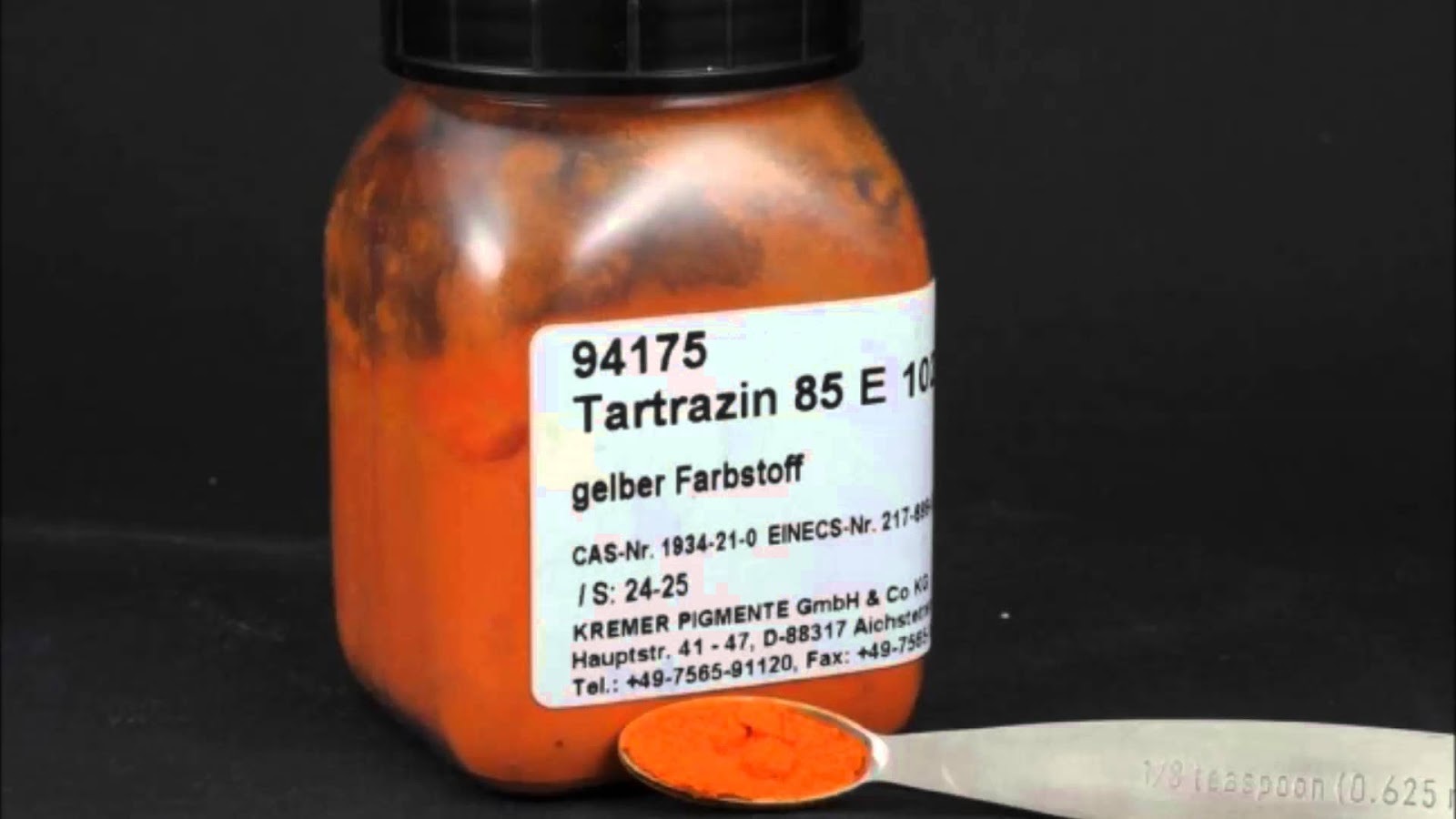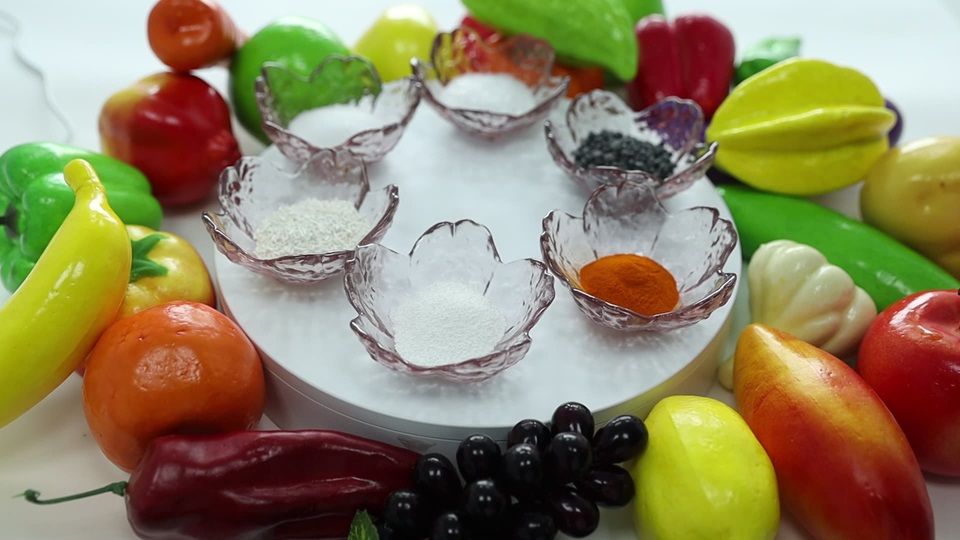We unleash your business potential by maximize the business innovation.
Send EmailE102, Tartrazine, Tartrazine Yellow Powder Food Coloring,
Tartrazine (E102): Chemical Structure and Properties
Tartrazine E102 is a food coloring widely used in the food industry. Tartrazine is usually found in yellow powder form and is used to give products a bright yellow color.
Chemical Structure of Tartrazine
The chemical structure of Tartrazine is an azo dye with the formula C16H9N4Na3O9S2. This compound belongs to the triarylmethan group, an organic compound containing azo bonds.
Properties of Tartrazine
Here are some properties of Tartrazine E102:
Area of Use: Tartrazine is generally used as a colorant in beverages, confectionery, ice cream and other food products.
Reliability: Tartrazine complies with food safety norms and standards in many countries, but it can cause allergic reactions in some people.
Solubility: Tartrazine is easily soluble in water and can be distributed homogeneously in products.
When these features come together, Tartrazine E102 has become a widely preferred food coloring in the food industry. However, it is important to be careful in its use and to obtain it from reliable sources.
Use and Importance of Tartrazine in the Food Sector
Tartrazine (E102), a colorant widely used in the food sector, is generally known as yellow food coloring. Tartrazine, also called tartrazine yellow, is used to give vibrant and attractive colors to foods.
The use of Tartrazine in the food sector is quite common because it is important for the products offered to the consumer to be visually appealing. Tartrazine, a substance preferred especially in coloring beverages, candies, ice creams and different types of snacks, plays an important role in increasing the sales of products and attracting the attention of consumers.
Use of Tartrazine and Health Effects
Studies on the effects of Tartrazine on human health have revealed various results. Some studies suggest that Tartrazine may cause effects such as hyperactivity and attention deficit in children. For this reason, the use of Tartrazine may be restricted or banned in some countries.
However, there is no defin
itive evidence on the effects of Tartrazine on human health and it is generally considered safe when used in small amounts. However, it should be noted that sensitive individuals may have allergic reactions to Tartrazine.
Tartrazine Use and Legal Regulations
Country Tartrazine Use
US FDA approved
Australia Limited use
European Union Limited use
Tartrazine use and quantities may vary from country to country. Therefore, it is important for food manufacturers to pay attention to the use of Tartrazine in accordance with local legal regulations.
The Role of Tartrazine in Beverage Production
Food coloring is an important ingredient in the beverage industry. In particular, food coloring called tartrazine is a substance frequently used in the coloring of beverages. Tartrazine is a dye that usually gives a yellow color and is preferred to increase the visual appeal of beverages.
Beverage manufacturers meticulously select food dyes to offer consumers attractive and eye-catching products. Tartrazine is a preferred food dye in the beverage industry due to its properties such as color stability, toxicity and solubility. At the same time, tartrazine has an important role in color standards.
Things to Consider When Using Tartrazine
It is important to follow certain rules and amounts when adding tartrazine to beverages. Excessive use can cause adverse health effects. For this reason, beverage manufacturers need to regulate the use of tartrazine according to certain standards. In addition, warnings should be included on the packaging of beverages containing tartrazine that this ingredient is present.
As a result, the role of tartrazine in beverage production is of great importance. While this food dye provides an aesthetic appearance in the coloring of beverages, it is also very important to use it in accordance with health standards.
Applications of Tartrazine in Cosmetic Products
Tartrazine is a chemical generally used as a colorant in food products. However, in recent years it has also been frequently preferred in the cosmetic industry. Tartrazine is used as a colorant and pigment in cosmetic products.
Main Applications of Tartrazine in Cosmetic Products
Tartrazine is generally used for the following purposes in cosmetic products:
Make-up Products: Tartrazine is among the colorants used in makeup products. It is frequently encountered in products such as eye shadows, lipsticks and nail polish.
Skin Care Products: Tartrazine is used as a colorant in some skin care products. It is especially preferred in lotions and creams.
Tartrazine in the Pharmaceutical Industry: Benefits and Risks
Tartrazine is a substance generally used as a colorant in the food and pharmaceutical industry. This substance is found in various products as a colorant, sweetener and preservative agent. In the pharmaceutical industry, tartrazine brings both benefits and risks with its use.
Benefits
Tartrazine is an ingredient used to improve the colors and tastes of drugs. It is also used to extend and protect the shelf life of products. Thanks to its coloring feature, it can help patients distinguish their drugs more easily. In addition, drugs containing tartrazine can support certain effects for certain conditions and improve the treatment process.
Risks
Drugs containing tartrazine can cause allergic reactions in some people. These reactions usually manifest themselves with symptoms such as skin rashes, itching and sometimes breathing difficulties. In addition, tartrazine can also cause behavioral changes such as hyperactivity in some people. Therefore, it is important for individuals who are sensitive to tartrazine content to be careful during drug use.
As a result, tartrazine is a widely used ingredient in both the pharmaceutical and food industries. However, when used correctly, it has benefits, as well as side effects and risks. Therefore, health professionals and patients should be careful when using products containing tartrazine and evaluate alternatives when necessary.
Source: It is a water-soluble colorant. It is in the category of E 102 group colorants. It is a synthetic food dye with high water solubility. It is in a position to be evaluated in different food productions and can be transferred to production areas in a wide structure.
Functions and Properties: It contains substances that do not harm human health. It also has a structure that is suitable for excessive evaluation in the food sector. The colorant is a yellow food colorant and can be transferred into the foods produced without any problems.
Areas of Use: It is used as a colorant in ice cream, pasta and confectionery manufacturing plants. In addition, it is also easily used in the production of foods such as soft drinks, puddings, powdered drink mixes, breakfast cereals, jams, almond butters, yogurts, pickles.
Tartrazine E102 is an artificial coloring agent widely used in the food industry. This substance has a bright yellow color and is generally used to give foods an attractive appearance. It can be found in many food products such as desserts, fruit-flavored drinks, sodas, soup varieties, chocolate, ice cream and candies. Tartrazine has some potential harms and concerns.


